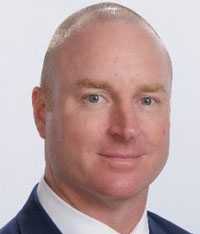McKesson's New Deal With The VA - What Pharma Needs To Know
By John Brannan and Cheryl Nagowski Middleton

In 2004, when McKesson won the Department of Veterans Affairs (VA) prime pharmaceutical supplier agreement, the industry shuddered at the “never before heard of” cost minus 5%. Since that time, the industry has come to better understand how large negative distribution fees are possible, and the complex math it takes for a distributor to offer customers discounts below the actual purchase price of the drug.
It’s important to first acknowledge a unique nuance in the wholesaler business model. A crucial element in wholesaler revenue is the capital created by floating funds, or the cash flow generated for a wholesaler between the time that a customer pays for a drug vs. the wholesaler reimbursing the drug manufacturer.
Although the VA has not yet published the contractual details, industry sources have reported that McKesson held onto its position as the VA’s sole drug supplier with a -14.5% fee on every VA purchase, taking effect in August 2020. The VA is an important customer, buying a large volume of drugs under “fast pay” or next day payment terms, an arrangement not heard of elsewhere in the market allowing McKesson to float a large volume of cash for 60-90 days.
Nevertheless, how is a wholesale acquisition cost (WAC) minus 14.5% fee possible or sustainable? What does McKesson know that the rest of us can’t seem to figure out? And more importantly what does this mean for the rest of the industry?
Opinions will vary and statistics will get tossed around, but what does it all really mean especially for drug manufacturers? Our take - be cautious.
Simplistically, distributors make money in four ways:
- Distribution Services Agreement (DSA) Fees
- Generics
- Prompt Pay Discounts
- Price Appreciation
Uniquely, distributors like McKesson only control 2 of the 4 ways in which they make money (DSA fees and prompt pay discounts). So, in a business where 50% of your revenue generating opportunity is controlled by outside entities such as the FDA, patent expiration, and manufacturers price increases, it’s no wonder that distributors have begun to take aggressive and sometimes antagonistic measures to protect their bottom line.
What’s more, the timing could not be worse. The generic patent cliff has come and gone, and price increases have just started to improve, but nowhere near historical levels. Despite these industry pressures, distributors refuse to demonstrate self-control when it comes to margin erosion and customer price discipline.
Dating back to the turn of the millennia, the pharma industry has evolved from a “speculative” purchasing model to a fee for service (FFS) model. It was during this transition that distributors would earn a 2% cash discount for paying within 30 days, while also earning 2% for the pick, pack, and ship (PPS) functions that logistic companies perform. As we open 2020, those same fees have grown to 2% 90-day terms and 15% FFS fees for companies who cannot leverage a large product portfolio or hundreds of millions in aggregate sales.
To be fair, not all customers of distributors are being forced into the 90-day terms and 15% FFS, however, regardless of a manufacturers size and/or sales volume every manufacturer utilizing a distributor is facing increased pricing, contentious negotiations, itemized services, and pressure to improve distributor economics despite poor distributor behavior.
So, are distributors that much more profitable given the negative cost of capital and rapidly increasing fees? Probably not. A cursory glance at any SEC 10K of the “BIG 3” (AmerisourceBergen, Cardinal Health, and McKesson) shows consistent historical aggregate margins between 1% and 1.75%. So, where has all the margin gone? The answer is – the customer, and in this case 14.5%, to the VA to maintain exclusive distributor status.
At face value this may sound like a “good news story” for VA patients, taxpayers, or the healthcare industry overall, but in reality, this can have concerning effects across the continuum; particularly for manufacturers.
Over the past 19 years distributors have increasingly raised their fees and the costs of doing business with them, yet their margins have remained the same. This is because they continuously set new “low water marks” for hospital, retail, and government pricing. Coupled with the notion that its cheaper to “keep a customer” vs going out and winning new business, distributors don’t really have a choice other than to pay customers to remain loyal when everyone has value adds like online ordering and next day delivery.
So, customers are getting better and better pricing, distributors margins remain razor thin (1%-1.75%) and manufacturers are being asked to “foot the bill” for this business model. This phenomenon has perpetuated itself for so long in our healthcare system that manufacturers now employ teams of Consultants, Trade relations and Commercial Access folks to actively seek out ways to minimize the effect of distributor economic pressures on their bottom line. (Sometimes with more success than others, but always with an eye on minimizing the dollars sent to a distributor given the margin pass-through.)
The reality is, not every manufacturer has the product portfolio or established sales portfolio of hundreds of millions to actively combat distributor pressures and therefore can only turn to a WAC price increase or alternative distribution model (specialty distribution, direct to consumer, or exclusive or limited distribution). This however has the potential to limit access, increase patient out of pocket costs, increase HCP costs, and raise Medicare spending – i.e. taxpayer costs.
-14.5% sure sounds like one heck of a deal, but it comes at a cost. Manufacturers are being asked to foot the bill for this kind of pricing. Given the inability for a distributor to maintain any kind of price discipline this aggressive pricing only perpetuates the cycle and it won’t be long before the margin is gone, and distributors have to go back to manufacturers for more “value.”
So, who is the ultimate winner? You decide. We believe that there are conflicting winners short term vs long term and that the model itself is not sustainable. Distributors play a role in our healthcare system but just like Y2K we are ripe for change/disruption and distributor role as we enter a new decade of the 2020’s will be shaped and defined by all of us.
Regardless of your business size and/or stage, think early, think often, and think creatively about your distribution and go to market strategy. A new pricing era has been thrust upon us, let this be a call to arms for the fiscally responsible and give us the strength to guide the industry into a new decade.
Bios:

John Brannan is VP supply chain and trade at D2 Pharma Consulting.

Cheryl Nagowski Middleton is VP of federal markets at D2 Pharma Consulting.
